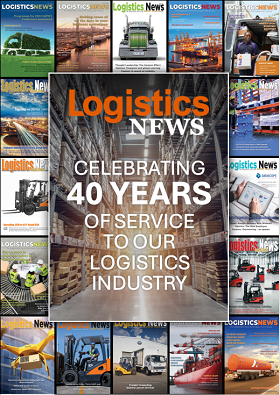Wearing masks, social distancing, working from home with mostly digital discussions – sustaining business and relationships has been tough, with little face-to-face contact. But many have survived and will survive in their personal capacity, but what about your business – particularly distribution to end customers from your warehouse?
Wearing masks, social distancing, working from home with mostly digital discussions – sustaining business and relationships has been tough, with little face-to-face contact. But many have survived and will survive in their personal capacity, but what about your business – particularly distribution to end customers from your warehouse?
Reacting to COVID-19 rules created heroes and horrors. Survival is still not guaranteed without innovating through supply chains. On 27 March 2020, we were ready for a bumper year, then on 28 March, the year bumped us and changed everything. Did you?
COVID lockdown new business priorities
Product and people:
* Industrial and retail buyer habits changed. Baskets of goods morphed to essential items and buying down to cheaper brands or lower quality industrial items simply because they were available.
* Finding local suppliers with stock as imports ran out and couldn’t be replenished became a priority.
Process:
- Order processing became cancelled orders, increased returns as activity slowed or stopped. Warehouses were suddenly full of the wrong stuff, but we didn’t know that yet.
- For retailers, there was different day shopping to avoid the ‘crowds’ – Saturday became Wednesday. Distribution plans had to change on the fly to capture the trade that was there.
- Retail store/branch channels dried up as online ordering exploded. Now it was delivering goods to actual doors, requiring smaller, more frequent deliveries, sanitised safe packaging, changing processes – picking, packing, substituting, delivery and returnable packaging etc. – and all immediately.
Technology:
- E-commerce headlined. A company used to handling 20 online daily orders took 8,000 the first week of lockdown. Their systems took the orders, but physical ability to fill/ship meant promised next-day delivery became three or four weeks.
- ERP systems driven by real demand planning helped many companies respond faster, saving millions.
- Automated warehouse systems helped cope with the speed of change, but many organisations employed more temporary resources instead for these extra steps.
As a result, logistics/warehousing companies are stepping up innovative strategies and enabling systems to respond to these rapidly shifting logistics trends in 2021. The following are likely to become the norm:
- Blockchain
Global blockchain 2019 spending was $2,7b; by 2022 it is expected to climb to $11,7b. Being on top of your data is crucial to optimise logistics operations data access security, plus counter the risks of dealing with third parties. Blockchain addresses these issues and is becoming part of company IT decisions, with more logistics companies cutting out waste with blockchain processes.
- Flexible capacity/labour
Amazon’s planned response to COVID-increased demand was hiring 100,000 temporary workers in fulfillment centres and fine-distribution. This flexing of labour is also likely to continue.
In channel distribution, transport options had to change from large pre-planned deliveries for responsive door-to-door delivery – creating groups of Uber-type van and personal vehicle to become the outsourced transport option, couriers were used, different packing requirements required more labour. These processes will continue.
- Elastic logistics
Heavy planning with fixed supply and demand are behind us as consumer immediacy, need for responsiveness and their comfortable adaptation to mobile/remote commerce (not only millennials) brings the 'now economy’, where supply chains and warehouse operations must adapt to respond to rapid change – not in weeks/months/years, but in hours/days.
Supply chains must be ready to expand or shrink capacity depending on ever-changing demand of industry variables. This is 'elastic logistics’, and it’s crucial to finding supply chain responses in 2021 and beyond.
- Last mile delivery and broader automation
Automation technology reshapes the future warehouse with self-driving vehicles, robots to help warehouse selection/packing processes and commercial drone experimentation.
The last mile just got shorter, the pipe thicker as door-to-door becomes the norm – not a visit to a retailer. On-shelf replenishment still matters, but it’s pick in the warehouse for at-home delivery in new types of vehicles – not those still depreciating.
WHO predicts 60 percent of people will live in cities by 2030 and use electric vehicles, so, in future, that mile needs to be shorter, closer, more last-minute adaptable.







